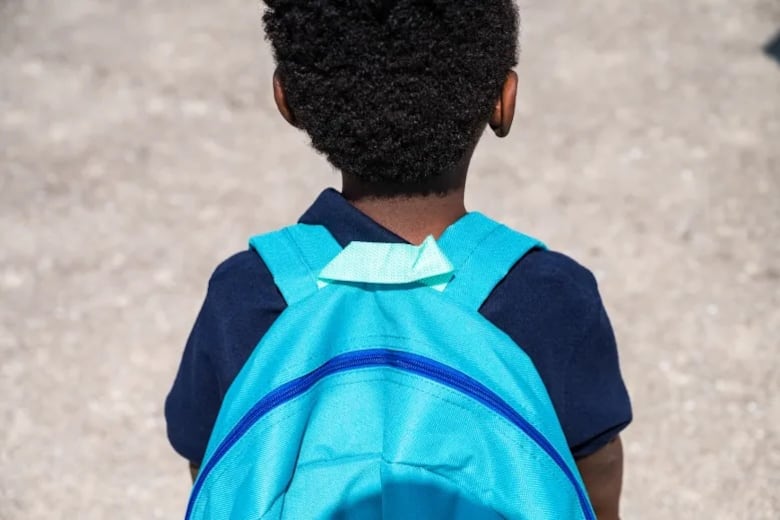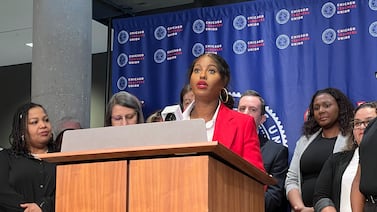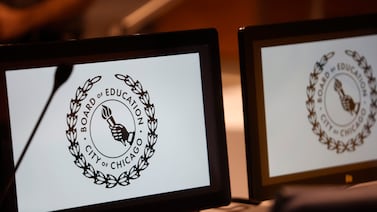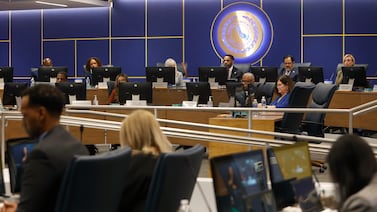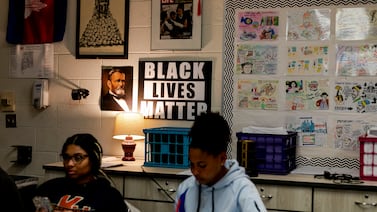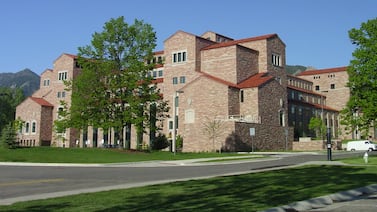Sign up for Chalkbeat Chicago’s free daily newsletter to keep up with the latest education news.
Chicago students and teachers head back to school on Aug. 26 for a new school year — emphasis on “new.”
The 2024-25 school year will be marked in Chicago history books as the year the city held its first school board elections. The district’s oversight body will grow from seven to 21 members — half of whom will be elected. There will be new students who recently migrated to America. And another new teachers union contract — possibly negotiated without a strike like the last one.
Chalkbeat Chicago will continue to stay on top of the latest changes and news in the world of education.
We also want to hear from you! What should be on our radar as we start the school year? Email us anytime at chicago.tips@chalkbeat.org or fill out this form.
Here are five issues Chalkbeat Chicago will be watching this school year:
A CPS budget battle and new contract costs
The Chicago Board of Education approved a $9.9 billion budget for the 2024-25 school year — up from the $9.4 billion budget last year.
But it could grow again because district officials will need to come up with a new, amended budget once a contract agreement is reached with the Chicago Teachers Union. The pace of contract talks has been slow and the new public bargaining sessions have been tense at times.
District officials said earlier this month that if CPS agreed to the teachers union’s proposals, it could lead to a $4 billion deficit by 2029.
At the same time, CPS is running out of the $2.8 billion in federal COVID relief funds it received in 2021 to spend by this September. The district spent the bulk of that money on staff salaries and a Chalkbeat investigation last spring found roughly 7% of school budgets were covered using one-time federal COVID dollars over the past three school years.
Facing tighter finances, Mayor Brandon Johnson, a former organizer for and ally of the Chicago Teachers Union, suggested CPS borrow money using short-term, high-interest loans in order to pay for increased costs related to the teachers’ contract and the pensions of non-teaching staff, which the city used to cover. CPS administration and the school board have pushed back on that suggestion.
The state of bilingual education with more newcomers
Nearly 9,000 new migrant students enrolled in Chicago Public Schools last school year, as waves of buses from Texas carried migrants who had crossed the southern border to urban cities run by Democrats, including Chicago. The influx, in part, helped drive CPS’s first increase in enrollment since 2011.
Although many of Chicago’s schools serve Spanish-speaking students, not all schools have bilingual programs or even bilingual employees who can connect with students. As many families moved out of city’s shelters into apartments with the help of a state resettlement program, their children enrolled in schools with a lack of resources and no bilingual support.
While many of these students may remain enrolled in CPS, some have moved out of Chicago to surrounding suburbs, rural towns, or other states. When the district takes its official enrollment count on the 20th day of school, the public will get a better understanding of how many English learners are in CPS.
The district has said it plans to hire more bilingual staff this coming school year, though it’s unclear exactly which schools will see more bilingual staff or how the district will prioritize schools.
By state law, once a school enrolls 20 or more students who speak the same native language, the school must create a transitional bilingual education program and teach those children in both their native language and English.
Chicago’s first school board elections
Chicago voters will see a brand-new office on their ballot this Nov. 5: school board member. Chalkbeat has some handy resources where you can find out more about your district, figure out who’s running, and see how much money candidates have raised as of June 30.
These first school board elections come after years of advocacy and considerable back-and-forth in the Illinois legislature over how to implement an elected school board.
The board won’t be fully elected right away. Ten people will be elected from 10 geographic districts. Mayor Johnson will also appoint a school board president and 10 more people from each district on or before Dec. 16.
There’s a twist to how he can make those appointments. Each district is also subdivided into two regions. For example, District 1 is made up of two parts: 1A and a 1B. If the winning candidate in District 1 lives in 1A, the mayor has to appoint someone who lives in 1B. If the winner in District 2 lives in 2B, the mayor must appoint someone who lives in 2A, and so on.
This 21-member partially-elected, partially-appointed school board will be sworn in on Jan. 15, 2025 to serve two-year terms.
How the new board begins to govern will be precedent-setting. There are rules and policies, of course, but the new members will quickly take on some of their core tasks: approving a budget and evaluating the CPS CEO. Both issues have been the subject of intense scrutiny lately, with Mayor Johnson reportedly trying to replace current CPS CEO Pedro Martinez amid pressure from the Chicago Teachers Union.
What will a new strategic plan include?
Last December, the Chicago school board passed a resolution directing district leadership to develop a new strategic plan for Chicago Public Schools. Among other things, the resolution said the board wanted to de-emphasize school choice and bolster neighborhood schools.
The edict from Mayor Johnson’s hand-picked school board came after he spent time on the campaign trail criticizing the district’s school system for creating “a Hunger Games scenario” in which families leave neighborhood schools for spots in coveted selective enrollment, magnet, and charter schools.
Still, the test-in and lottery programs are popular among families. State lawmakers threatened to intervene this spring if CPS changed or closed selective enrollment and magnet schools. Johnson and district leaders have said they won’t close or severely weaken these schools. But some, including charter school advocates, worry their schools could be impacted by budget cuts or even closed once a moratorium on school closures lifts in 2025.
The previous five-year plan developed by former CPS CEO Janice Jackson was approved by the school board one week before the 2019 mayoral election that saw a landslide victory for former Mayor Lori Lightfoot. Two years later, in 2021, Jackson announced she would step down. Martinez took over as CPS CEO in September 2021 and the following year, released a “three-year blueprint” for bouncing back from the pandemic.
Although officials held public meetings to gather feedback on a new strategic plan, they have yet to release a document laying out their vision for the next five years. But rumblings that the mayor might replace Martinez in the top job and a big shift in the size and governance structure of the school board raise questions about the implementation of a new five-year strategy.
Will bus transportation woes continue?
On the first day of school, all Chicago Public Schools students and accompanying adults can ride Chicago Transit Authority buses and trains for free.
But transportation troubles have plagued the district at the start of the school year since returning to in-person school in 2021 after pandemic-related closures. Chicago, like many districts, suffered from a bus driver shortage, leading CPS to offer stipends for alternative transportation options, such as rideshare, to families entitled to bus service.
Last school year, CPS canceled bus service for roughly 8,000 general education students, most of them attending magnet and selective enrollment schools, in an effort to ensure students with disabilities not only had bus routes, but were also not riding for more than an hour each way. The state put the district under a corrective action for both issues, but recently ended its oversight.
Becky Vevea is the bureau chief for Chalkbeat Chicago. Contact Becky at bvevea@chalkbeat.org.

